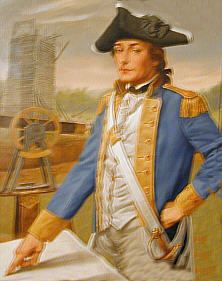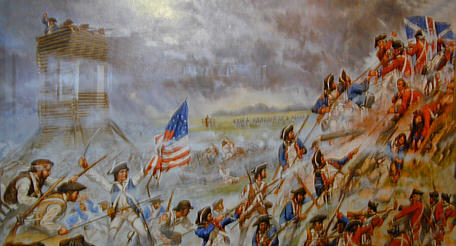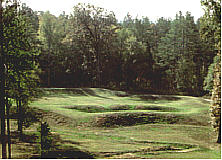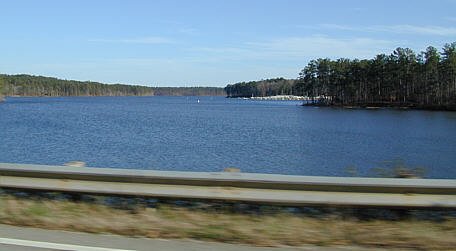NINETY SIXSOUTH CAROLINA |
 |
NINETY SIXSOUTH CAROLINA |
 |
|
Ninety Six before the Revolution As population moved from Tidewater Carolina into the backcountry, this site became a convenient campground along the Cherokee Path. The first residents were hunters, followed by cattle drovers and Indian Traders. By 1753, Robert Gouedy had built a trading post here which soon rivaled some Charleston merchants in volume of trade. During the war with the Cherokees, local militia built a stockade around Gouedy’s barn. In March 1760, the garrison successfully withstood an attack by 250 Cherokee warriors. As settlement increased in the backcountry, there was a breakdown of law and order. Seven judicial circuits were established in 1769 and a courthouse and jail were built at Ninety Six shortly thereafter. On the eve of the Revolution, a thriving little community flourished here. (Ninety Six Marker) |
|
One of the first southern encounters between Patriot and Loyalist forces took place in the Backcountry at the Ninety Six Outpost. In 1775, Ninety Six was a thriving outpost where trade with the Indians flourished. It was located at an important crossing of Indian trails and derived its name because it was 96 miles to the Cherokee village of Keowae.
On November 3, 1775, Loyalists seized a Patriot munitions convoy. Both sides gathered their forces and the Loyalists, under the command of Patrick Cunningham, attacked the Patriots at Ninety Six. After a brief three-day siege, a truce was called to allow the leaders to settle their differences. However, more Patriot forces arrived under the command of Colonel Richard Richardson who ignored the truce and dispersed the Loyalists into Cherokee country.
For the next several years, the Backcountry was in relative peace although the constant threat of an Indian attack still hung over the frontier.
Following the surrender of Charleston on May 12, 1780, Ninety Six became an important Loyalist stronghold among four key outposts that included Augusta, GA to the southwest and Camden, SC and Georgetown, SC to the east.
Ninety Six served as a base of operations for Patrick Ferguson. It was from here that he recruited the Loyalist militia that would later be destroyed at Kings Mountain.
After Ferguson’s defeat, the Ninety Six Outpost was garrisoned by about 550 Loyalists from New York, New Jersey and South Carolina under the command of John Harris Cruger. Cruger was a competent commander from New Jersey and he knew the importance of this outpost in maintaining British control over the south.
|
The Stockade Fort The British built this “stockade fort on the right” in 1781 on property owned by James Holmes, a Loyalist, to protect the garrison’s water supply. An irregular fortification built around a barn and several out buildings, the stockade was surrounded by a ditch and abatis and was linked to the town by a communications trench. When he arrived from Augusta, Georgia, in June 1781, Lt. Col. Henry Lee assumed command of the Patriot attack against the Stockade Fort. In the final American assault on June 18, Lee’s men captured the redoubt, but held it only until Greene ordered the attack ended. (Ninety Six Marker) |
|
The outpost was well garrisoned and with its star-shaped fort, stockaded village and a stockade fort at the western end, many thought Ninety Six was impregnable. Although his force was small, Cruger knew that relief forces from the coast could reach them if they were surrounded.
 General
Nathaniel Greene brought his Continental Army to Ninety Six on May 22, 1781 with
his chief engineer, Colonel Thaddeus Kosciuszko. A Polish volunteer, Kosciuszko
was the Continental Army’s military engineer. He had designed the defenses
that contributed to the American victory at Saratoga as well as those at West
Point, which deterred the British from control of the Hudson River in Upstate
New York. After seeing how well fortified Ninety Six was, he recommended a
siege.
General
Nathaniel Greene brought his Continental Army to Ninety Six on May 22, 1781 with
his chief engineer, Colonel Thaddeus Kosciuszko. A Polish volunteer, Kosciuszko
was the Continental Army’s military engineer. He had designed the defenses
that contributed to the American victory at Saratoga as well as those at West
Point, which deterred the British from control of the Hudson River in Upstate
New York. After seeing how well fortified Ninety Six was, he recommended a
siege.
Following his advice, Greene began digging trenches closer and closer to the fortifications. The first trenches were placed too close to the Star Fort and the Loyalists sallied out and captured the Patriot’s entrenching tools. After that humiliating setback, new trenches were opened at a distance of about 200 yards. To keep down the fort's defenders, a thirty-foot-tall log tower was built and sharpshooters picked off anyone so unwise as to show their selves.
Once within striking distance, Kosciuszko directed Greene's men to dig a tunnel to blow up the Star Fort's wall to cut off the water supply. The defenders attacked the tunnel operation and Kosciuszko was wounded by a bayonet, however, Ninety Six still held out.
When the British in Charleston learned of the siege, they sent reinforcements under Lieutenant Colonel Francis Rawdon. Greene ordered Sumter to slow Rawdon's march, but Sumter, slow to react to Greene’s orders, missed Rawdon’s forces. Six days after leaving Charleston, Rawdon got word to Ninety Six of the arrival of his relief force.
But before Rawdon arrived, the Patriots bolstered their ranks with additional forces under the command of Lieutenant Colonel Henry Lee. Lee arrived fresh from a successful siege at Augusta (an upcoming site on this road trip). With time running out, the Patriots tried taking the post by assault before Rawdon’s arrival.

On June 18, a two-pronged attack was launched on Ninety Six. Lee led one assault on the Stockade Fort and it fell quickly.
However, the assault on the Star Fort was not successful. About 50 attackers, armed with hooks to pull down sandbags, muskets, and bayonets, were stopped in the fort ditch. The walls were too high and the defenders sallied out, coming around the ditch from both sides. About 30 of the soldiers were casualties and their attempt to weaken the Star Fort failed.
On June 19th, after conducting the longest siege of the Revolutionary War (28 days), Greene retreated. Ninety Six held out until it was relieved by Rawdon. However, by the time Rawdon’s forces reached Ninety Six, they were too worn out from the forced march to pursue Greene's withdrawing army.
 Although
Ninety Six held against the siege, within a week, the British destroyed the
fortifications and evacuated the area. Marching by night to avoid the heat,
British soldiers and refugees left for Charleston.
Although
Ninety Six held against the siege, within a week, the British destroyed the
fortifications and evacuated the area. Marching by night to avoid the heat,
British soldiers and refugees left for Charleston.
After the evacuation of Ninety Six, three of the four key outposts on the British defensive screen (Ninety Six, Augusta, and Camden) were now under American control. Only Georgetown remained in British hands and it was evacuated after several attacks.
Ultimately, without personally winning a single battle, Greene won the “war of posts.” A former quartermaster general under Washington, Greene understood the importance of keeping his army fed and in the field. With failing supplies to British forces, partisan raiding, and the constant threat of a siege, the British lost control of the Backcountry because they were unable to destroy Greene's army.
|
Communications Trench A communications trench joined the town stockade with the Stockade Fort which lay 200 yards to the west. This “covered way” allowed troops in the garrison to get water from Spring Branch or move from the town to the Stockade Fort without being exposed to rifle or musket fire. (Ninety Six Marker) |
|
Today, visitors to Ninety Six can take a walking tour from the Visitor Center to the restored Gouedy Trading Post, the Stockade Fort, the area where the village once stood and finally the remains of the Star Fort. The Visitor Center includes several exhibits and offers a short movie about Ninety Six. Ninety Six is open from 8 AM - 5 PM daily, but is closed Thanksgiving, Christmas and New Year's Day.
Hickory Knob State Park -- In the park is the historic Guillebeau house. The house was built around 1770 by André Guillebeau, a Revolutionary War veteran and one of numerous French Huguenots who settled in the eighteenth century settlement of New Bourdeaux.
|
The Guillebeau house was built in circa 1770 in the Huguenot settlement of New Bourdeaux. It was relocated to its present site in 1983. (Hickory Knob State Park Marker) |
|
Georgia State Line -- Cross the Savannah River and enter the State of Georgia. At this point, the river is part of two lakes, Thurmond Lake on the South Carolina side and Clarks Hill Lake on the Georgia side. Downstream is Thurmond Dam.

